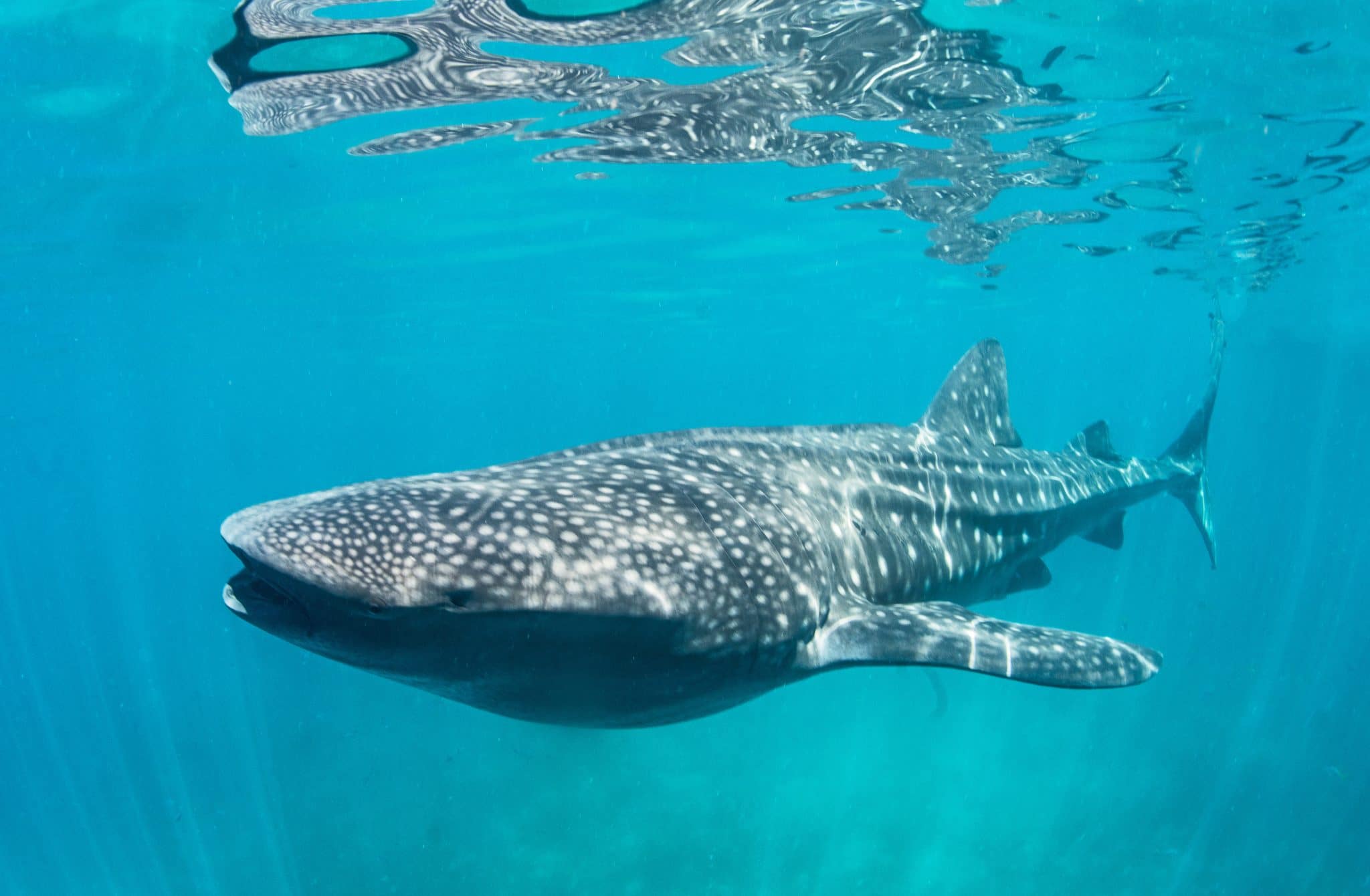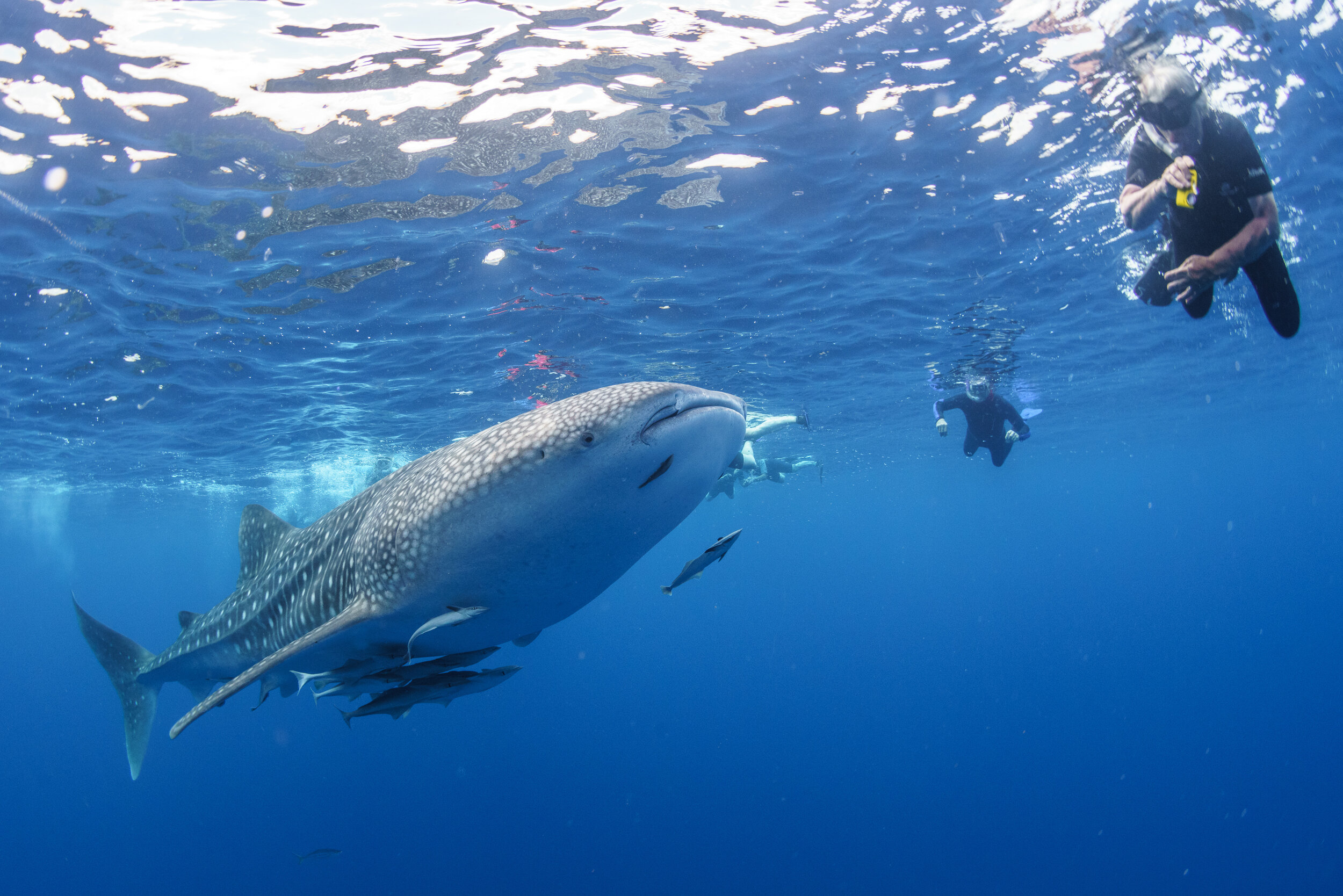Marine Life & Conservation
New study values Madagascar Whale Shark Tourism at $1.5 Million amid calls for stronger protections

-
The three-month whale shark tourism season in Nosy Be (NW Madagascar) has been valued at $1.5 million USD
-
Tourists who visit specifically to swim with whale sharks spend 55% more ($901,274) than ‘casual’ whale shark tourists ($581,239)
-
Calls for sustainable tourism measures to protect whale sharks are overwhelmingly supported by operators and tourists
-
67.4% of tourists are more likely to choose a destination if whale sharks are protected
Credit: Dr. Simon J. Pierce
A new study published in the journal Tourism in Marine Environments has valued the whale shark tourism industry in Madagascar’s Nosy Be for the first time, with the three-month season worth $1.5 million USD to the local economy.* The study has revealed the economic benefit that whale sharks provide as the region prepares for the return of tourists following COVID-19.
Stella Diamant, the project’s leader and research associate with the Marine Megafauna Foundation (MMF), as well as the founder of the Madagascar Whale Shark Project, said, “this study has confirmed the importance of sustainable whale shark tourism to Madagascar’s economy, particularly during its pandemic recovery. Considering the region’s international reputation as a whale shark hotspot, and the presence of an international airport, it’s likely that its shark tourism industry will grow considerably once international travel resumes.”
Credit: Madagascar Whale Shark Project
The study found that ‘dedicated’ whale shark divers – travelers who visited specifically to swim with whale sharks – spent six times as much as ‘casual’ whale shark tourists ($547 vs. $92 respectively). Despite making up just a fifth of respondents (20.5%), the expenditure of this group was worth 55% more overall ($901,274) than causal whale shark divers ($581,239).
Both tourists (93.4%) and operators (91.7%) overwhelmingly support formal protections for whale sharks in Madagascar.**
The majority (67.4%) of tourists stated they were more likely to choose a tourism destination if whale sharks were protected.
Despite being globally endangered, whale sharks are not formally protected in Malagasy waters and are threatened by fishery bycatch, collisions with vessels, and pollution. Tour operators overwhelmingly supported legal protection for whale sharks in Madagascar and highlighted the potential to introduce regulations to avoid overcrowding, as interest in swimming with the sharks grows internationally. Operators suggested levying fines or sanctions for anyone behaving irresponsibly around the sharks.
Credit: Dr. Simon J. Pierce
Dr. Jackie Ziegler from the University of Victoria in Canada and lead author of the study said, “it’s far more difficult to scale back activities compared to managing tourism sustainably from the start. Our work has shown clear support from both tourism operators, and the tourists themselves, to ensure that swimming with whale sharks in Madagascar is a world-class ecotourism experience.”
MMF Principal Scientist Dr. Simon Pierce added, “Madagascar is best-known now for its amazing land animals, such as lemurs and chameleons, but the marine wildlife is equally spectacular. It’s fantastic to see that Nosy Be tourism operators are committed to protecting these gentle giants as well as high-quality ecotourism.”
This study was led by the Madagascar Whale Shark Project in collaboration with the Marine Megafauna Foundation, University of Victoria, Marine Wildlife Conservation Society, and Florida International University. It was supported by MADA Megafauna, Aqua-Firma, Ocean Giants Trust, and the Vocatio Foundation.
For more information about the Marine Megafauna Foundation visit their website by clicking here.
Blogs
Invitation from The Ocean Cleanup for San Francisco port call

6 years ago, The Ocean Cleanup set sail for the Great Pacific Garbage Patch with one goal: to develop the technology to be able to relegate the patch to the history books. On 6 September 2024, The Ocean Cleanup fleet returns to San Francisco bringing with it System 03 to announce the next phase of the cleanup of the Great Pacific Garbage Patch and to offer you a chance to view our cleanup system up-close and personal.
We look forward to seeing you there.
To confirm your presence, please RSVP to press@theoceancleanup.com
PROGRAM
Join The Ocean Cleanup as our two iconic ships and the extraction System 03 return to San Francisco, 6 years and over 100 extractions after we set sail, to create and validate the technology needed to rid the oceans of plastic.
Our founder and CEO, Boyan Slat, will announce the next steps for the cleanup of the Great Pacific Garbage Patch. Giving you a chance to view our cleanup system and the plastic extracted.
Hear important news on what’s next in the mission of The Ocean Cleanup as it seeks to make its mission of ridding the world’s oceans of plastic an achievable and realistic goal.
Interviews and vessel tours are available on request.
PRACTICALITIES
Date: September 6, 2024
Press conference: 12 pm (noon)
Location: The Exploratorium (Google Maps)
Pier 15 (Embarcadero at Green Street), San Francisco, CA
Parking: Visit The Exploratorium’s website for details.
RSVP: press@theoceancleanup.com
Video & photo material from several viewing spots around the bay
We look forward to seeing you there!
ABOUT THE OCEAN CLEANUP
The Ocean Cleanup is an international non-profit that develops and scales technologies to rid the world’s oceans of plastic. They aim to achieve this goal through a dual strategy: intercepting in rivers to stop the flow and cleaning up what has already accumulated in the ocean. For the latter, The Ocean Cleanup develops and deploys large-scale systems to efficiently concentrate the plastic for periodic removal. This plastic is tracked and traced to certify claims of origin when recycling it into new products. To curb the tide via rivers, The Ocean Cleanup has developed Interceptor™ Solutions to halt and extract riverine plastic before it reaches the ocean. As of June 2024, the non-profit has collected over 12 million kilograms (26.4 million pounds) of plastic from aquatic ecosystems around the world. Founded in 2013 by Boyan Slat, The Ocean Cleanup now employs a broadly multi-disciplined team of approximately 140. The foundation is headquartered in Rotterdam, the Netherlands, and opened its first regional office in Kuala Lumpur, Malaysia, in 2023.
Find out more about The Ocean Cleanup at www.theoceancleanup.com.
Marine Life & Conservation
SHARK MONTH ARRIVES AT ROYAL WILLIAM YARD, PLYMOUTH

A shark has been spotted approaching Royal William Yard in Plymouth, much to the surprise of swimmers, paddleboarders and onlookers.
With its distinctive dorsal fin cutting through the water, the sizeable shark swam along the coastline, before turning to head inland towards Firestone Arch at Royal William Yard. The appearance drew a crowd, who were captivated for more than an hour by the unusual sight – and it was all caught on video.
The shark is one of many expected sightings at Royal William Yard over the coming weeks… because today marks the start of Shark Month!
In reality, the ‘shark’ spotted along the Plymouth shoreline was actually a custom-made model, created by the team at Royal William Yard and sailed underwater by Caroline Robertson‑Brown from the Shark Trust, who donned scuba diving gear for the occasion.
The stunt took place to launch Shark Month in style and draw attention to the work of the leading international conservation charity, which is based in Britain’s Ocean City. Spectators were reassured that the water was safe and many entered into the spirit of the performance, swimming or sailing alongside the shark.
Shark Month will take place across Royal William Yard throughout July and will feature an extravaganza of art, entertainment and advocacy for everyone to enjoy. The packed programme of events starts with an art exhibition and ends with a trip on paddleboards with shark experts – with everything from a shark quiz to a Jaws screening in between.
Paul Cox, CEO of the Shark Trust, said: “There are often assumptions and misconceptions when it comes to sharks. This was certainly the case with the shark spotted at Royal William Yard! While the British coastline is home to many species of shark, this was not one of them. However, we’re thrilled it caught people’s attention, because seeing a shark is a special and memorable moment. That is precisely why we want to celebrate these incredible creatures, highlight the need for conservation, and ask for help to safeguard their future.”
For more information about Shark Month at Royal William Yard, visit the Shark Trust Website.
Images and video: Jay Stone
-

 Blogs2 months ago
Blogs2 months agoDiving With… Nico, Ocean Earth Travels, Indonesia
-

 News1 month ago
News1 month agoMurex Bangka Announce New Oceanfront Cottages & Beachfront Dining
-

 Blogs2 months ago
Blogs2 months agoA new idea in freediving from RAID
-

 Marine Life & Conservation1 month ago
Marine Life & Conservation1 month agoIceland issue millionaire whale hunter a licence to murder 128 vulnerable fin whales
-

 Marine Life & Conservation2 months ago
Marine Life & Conservation2 months agoThe Shark Trust Great Shark Snapshot is back
-

 News3 months ago
News3 months agoCharting New Waters; NovoScuba Goes Global with the Launch of their Revolutionary Dive Training Agency!
-

 Gear News1 month ago
Gear News1 month agoNew Suunto Ocean – a dive computer and GPS sports watch in one for adventures below and above the surface
-

 Marine Life & Conservation Blogs2 months ago
Marine Life & Conservation Blogs2 months agoBook Review: Plankton

















